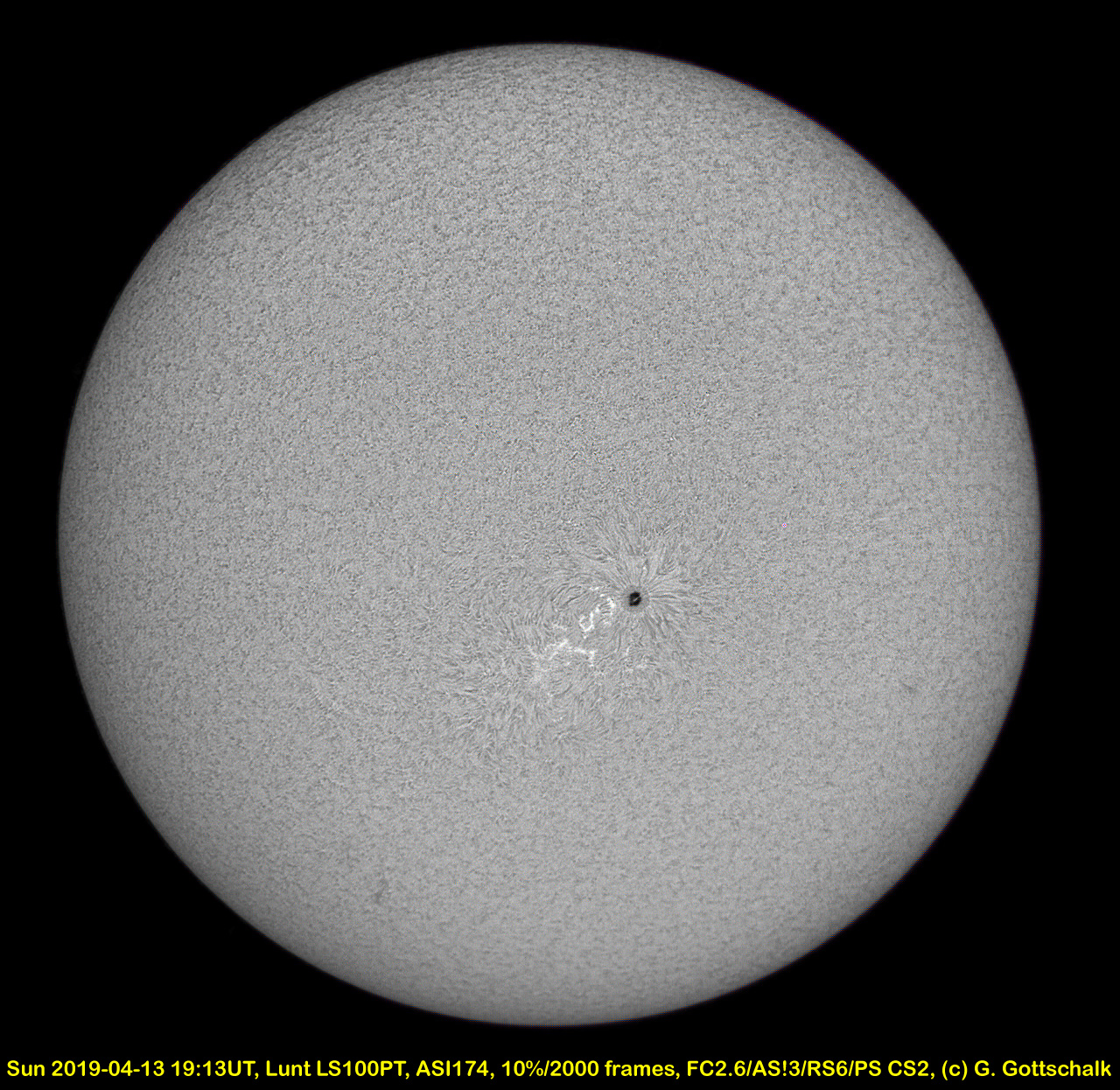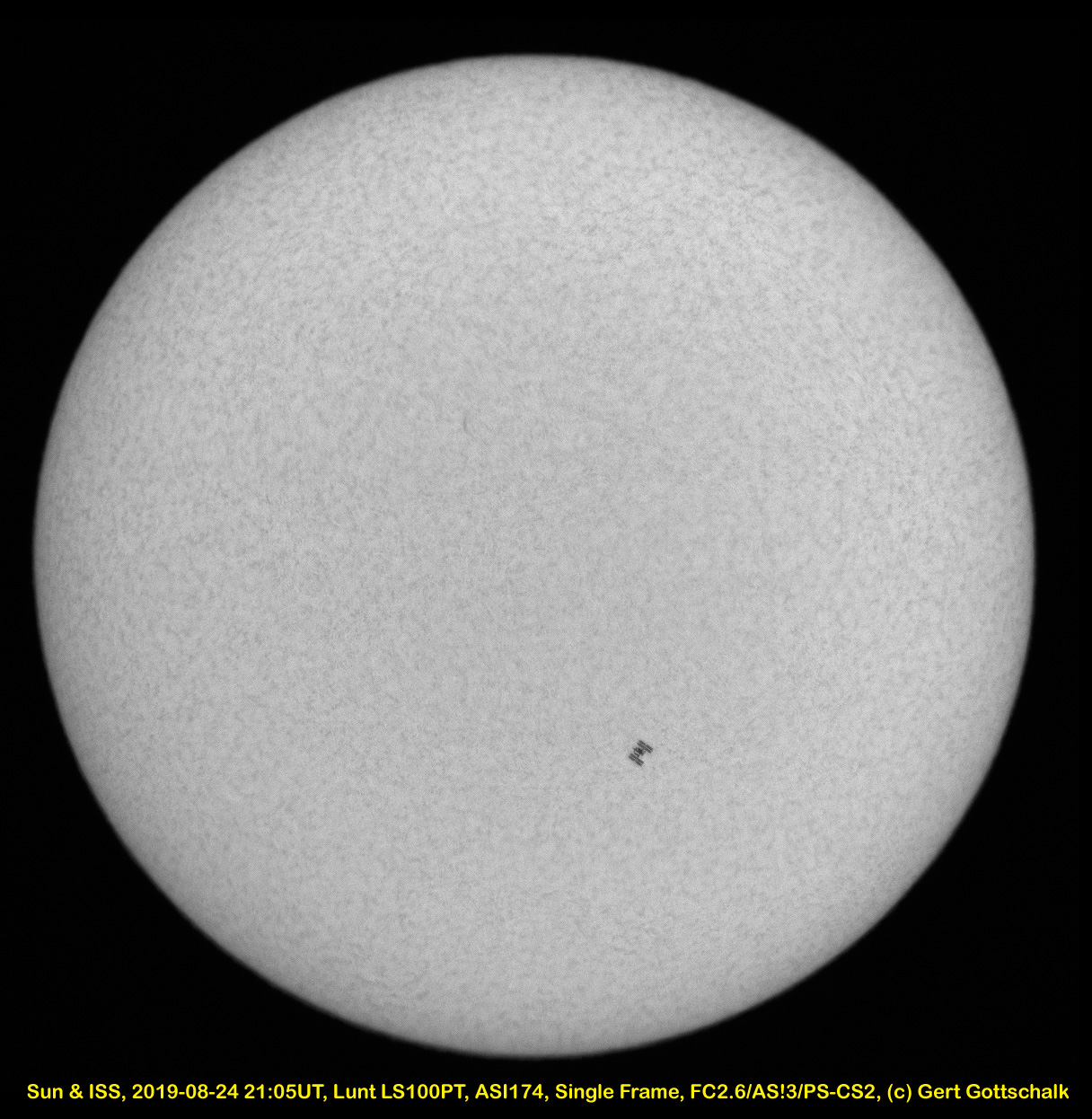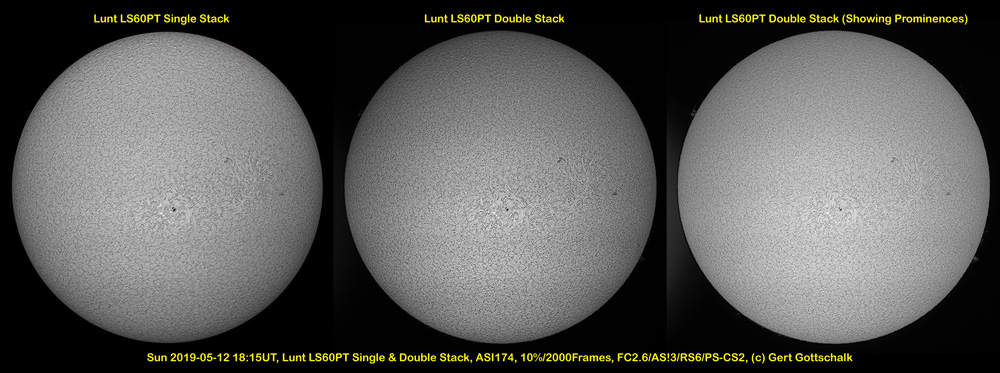Images taken with Lunt LS60 or Lunt LS100 in single stack or double stack mode as indicated near the image.
Recording with ASI174. Typically 10% to 20% of 750 / 1000 / 2000 frames stacked in AutoStakkert!3 wavelet sharpening in Registax 6 and finishing in Photoshop CS2.
Time-lapse videos with Python script and ffmpeg.
2019-08-24 21:05UT Not much activities on the Sun so I was lucky to find a transit of the ISS in front of the Sun. There is a great website to compute transit predictions for any location. Using the prediction I setup the Lunst LS100PT in single stack mode and ASI174 USB3 cameraq. With USB3 the combination of camera and laptop with SSD can record 100frames/sec at 1200x1200pixels. The actual transit was only 0.6sec so only a total of 60frames show the ISS in front of the Sun's disk. (click on image for full size)
The original speed raw AVI from the camera re-coded into mp4. Wait for the 0.6sec transit!
Now a 4x slow down version of the transit.
2019-05-12 18:15UT This week a new sunspot group appeared. Using the Lunt LS60PT I wanted to make a comparison between the single stack filter setup and double stack. The difference of adding the double stack filter is subtle but noticeable. The photosphere is more strongly suppressed thus also dimming the sunspot and enhancing the contrast for the chromosphere. With the double stack filter we are also able to see the prominences in the same shot when we enhance the darker part of the pixel histogram. (Click on image for full size)
2019-04-13 19:13UT We are still in the Solar minimum and just one small sunspot developed over the last week.

Copyright images and processing Gert Gottschalk.
Copyright Bilder und Verarbeitung Gert Gottschalk

